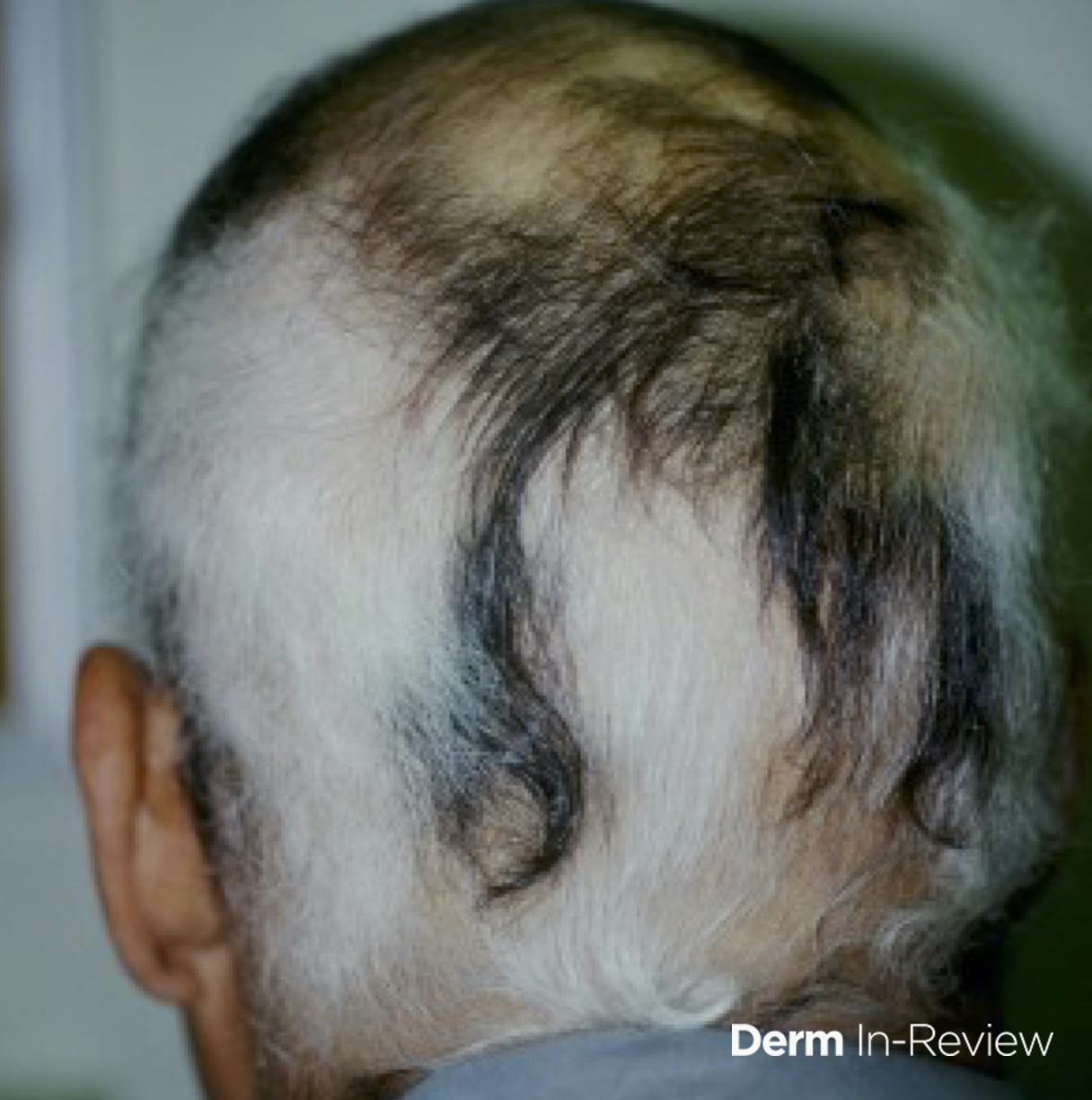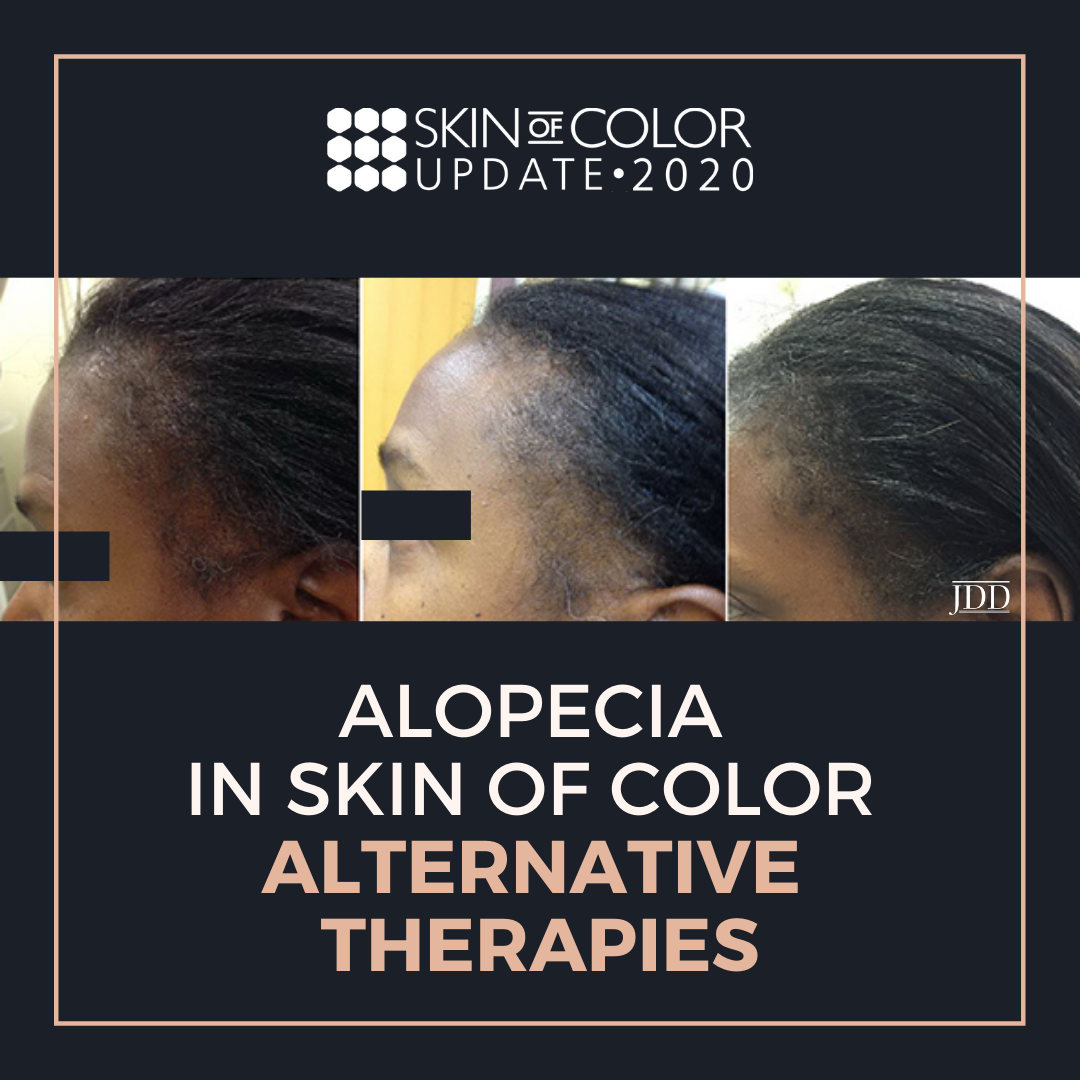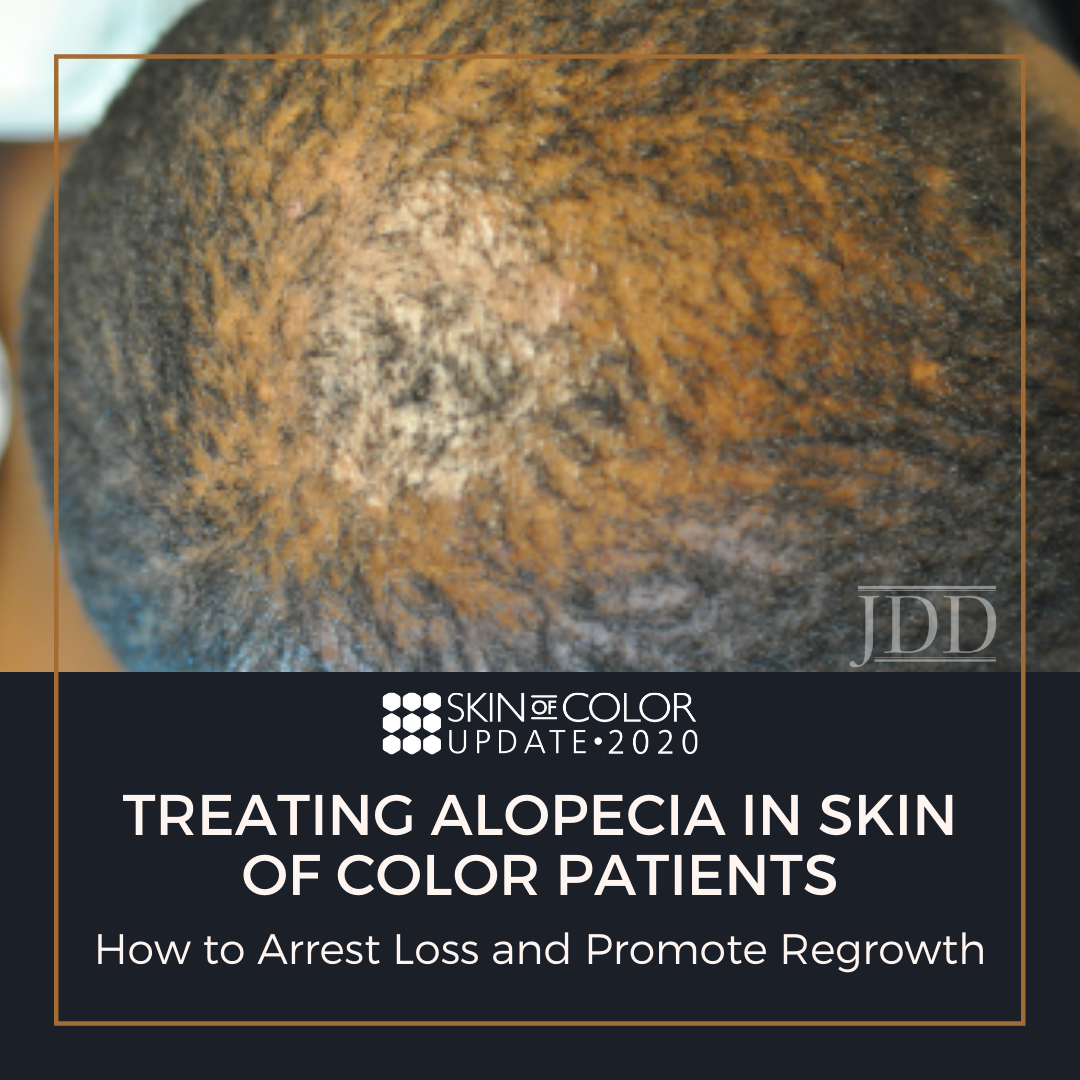Alopecia areata – Friday Pop Quiz 01/15
 What is the diagnosis:
A. Alopecia areata
B. Trichotillomania
C. Androgenetic alopecia
D. Tinea capitis
E. Temporal triangular alopecia
To find out the correct answer and read the explanation, click here.
Brought to you by our brand partner Derm In-Review. A product of SanovaWorks.
…
What is the diagnosis:
A. Alopecia areata
B. Trichotillomania
C. Androgenetic alopecia
D. Tinea capitis
E. Temporal triangular alopecia
To find out the correct answer and read the explanation, click here.
Brought to you by our brand partner Derm In-Review. A product of SanovaWorks.
…
 What is the diagnosis:
A. Alopecia areata
B. Trichotillomania
C. Androgenetic alopecia
D. Tinea capitis
E. Temporal triangular alopecia
To find out the correct answer and read the explanation, click here.
Brought to you by our brand partner Derm In-Review. A product of SanovaWorks.
…
What is the diagnosis:
A. Alopecia areata
B. Trichotillomania
C. Androgenetic alopecia
D. Tinea capitis
E. Temporal triangular alopecia
To find out the correct answer and read the explanation, click here.
Brought to you by our brand partner Derm In-Review. A product of SanovaWorks.
… 

 Management of alopecia in skin of color is challenging due to a paucity of research into its pathophysiology coupled with a poor understanding of the basic hair care practices in this patient population. For the patient, it is often associated with severe emotional distress. Unfortunately, many forms of hair loss are refractory to standard therapies.
At the 2020 Skin of Color Virtual Update, Dr …
Management of alopecia in skin of color is challenging due to a paucity of research into its pathophysiology coupled with a poor understanding of the basic hair care practices in this patient population. For the patient, it is often associated with severe emotional distress. Unfortunately, many forms of hair loss are refractory to standard therapies.
At the 2020 Skin of Color Virtual Update, Dr …  Can you improve your culturally-competent hair loss consultation? Would you like to grow your toolbox for comprehensive alopecia treatment? If so, you are in the right place!
Hair loss is a frequent concern for patients visiting the dermatologist, especially in patients with pigmented skin types. Kinky or coiled hair has an innate fragility that makes African Americans especially prone to hair …
Can you improve your culturally-competent hair loss consultation? Would you like to grow your toolbox for comprehensive alopecia treatment? If so, you are in the right place!
Hair loss is a frequent concern for patients visiting the dermatologist, especially in patients with pigmented skin types. Kinky or coiled hair has an innate fragility that makes African Americans especially prone to hair …  Just as hair types often differ among different ethnicities, the prevalence and presentation of dermatological diseases affecting the hair and scalp can also be diverse. These are attributed to innate hair shaft differences, hair styling practices, genetic influence, and inflammatory co-morbidities. Differentiating scarring alopecia from other types of hair loss is especially critical in develop …
Just as hair types often differ among different ethnicities, the prevalence and presentation of dermatological diseases affecting the hair and scalp can also be diverse. These are attributed to innate hair shaft differences, hair styling practices, genetic influence, and inflammatory co-morbidities. Differentiating scarring alopecia from other types of hair loss is especially critical in develop …  Coveteur recently wrote an article asking if hair greying can be slowed. For expert advice, I contacted Chesahna Kindred, MD, MBA, FAAD, a dermatologist in practice in Columbia, Md.
Is it possible to slow the greying of hair?
In several of my alopecia patients, platelet-rich plasma (PRP) reverses grey hair. The repigmentation persists when patients keep up with maintenance therapy. In …
Coveteur recently wrote an article asking if hair greying can be slowed. For expert advice, I contacted Chesahna Kindred, MD, MBA, FAAD, a dermatologist in practice in Columbia, Md.
Is it possible to slow the greying of hair?
In several of my alopecia patients, platelet-rich plasma (PRP) reverses grey hair. The repigmentation persists when patients keep up with maintenance therapy. In …